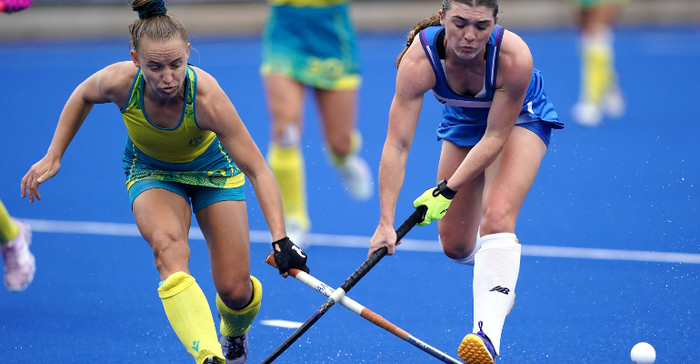A new 5-in-1 respiratory test panel was launched at the 2022 Commonwealth Games.
August 31, 2022

The 2022 Commonwealth Games drew about 6,500 athletes and officials from 72 nations and territories for the biggest multi-sport event held in the United Kingdom since the 2012 London Olympics. But behind the scenes of the 11-day event, which took place earlier this month in Birmingham, England, some of the most advanced sports medicine tech and other medical devices were hard at work.
One such medical technology on the sidelines at the 2022 Commonwealth Games was a portable, rapid diagnostic system, developed by London-based ProtonDx, called the Dragonfly. According to the company, Team Scotland requested to use the Dragonfly as a direct result of having used the system earlier this year at the 2022 Olympic Winter Games in Beijing, China.
Testing at the 2022 Commonwealth Games provided insight into respiratory infections that might have affected individual performance and helped identify any impact on other athletes who might have potentially been exposed, ProtonDx noted. It helped provide ‘peace of mind’ to athletes and coaches in the run-up to, and during, the Games. Team Scotland’s request to use the system was a direct result of the highly positive experience, earlier this year, of Dragonfly’s use by Team GB at the 2022 Olympic Winter Games held in Beijing, China.
Using ultra-fast nucleic acid extraction, and isothermal colorimetric detection, the system achieves PCR-equivalent sensitivity and specificity in less than 30 minutes from sample to result. The 5-in-1 respiratory test panel detects severe acute respiratory syndrome coronavirus 2 (SARS‑CoV‑2), influenza A, influenza B, respiratory syncytial virus, and human rhinovirus in a single test.

"It has taken years of intense training and focused preparation for Scotland’s best athletes to compete in the 2022 Commonwealth Games, the largest games ever held," said Niall Elliott, MD, chief medical officer for Team Scotland. "It was of the utmost importance that my team and I were able to ensure our athletes were in top condition and free of several critical respiratory viruses. The recent COVID-19 pandemic has made us more attuned to how vital it is to be able to quickly assess athletes’ health using a system that is highly portable and can test for multiple viruses in parallel. With the successful use of Dragonfly in Beijing, we approached ProtonDx about using this diagnostic tool during the 2022 Commonwealth Games. We appreciate our strong relationships and coordinated efforts with Team GB and ProtonDx, and value the innovative Dragonfly technology.”
In June, ProtonDx, reported that it had received a CE‑IVD mark for its Dragonfly multi-pathogen detection diagnostic system. The company says the system is poised to help revolutionize rapid infectious disease diagnosis and tracking worldwide. ProtonDx is a heath technology spin-out from Imperial College London UK.
"Dragonfly's successful deployment in elite sports is a testament to the reliability, ease-of-use, and portability of the system that we saw during its use by Team GB at the Olympic Winter Games," said Bob Enck, chairman and president at ProtonDx. “Team Scotland wanted to access the independent infectious disease detection and testing capability that Dragonfly offers. Dragonfly is a potential game changer in the diagnostics industry – providing quick, cost-effective, and confident results, irrespective of location. With its demonstrated value at major international sporting events, the interest in Dragonfly throughout the sporting world and other key industries is rapidly expanding across Europe.”
Medical imaging at 2022 Commonwealth Games
Imaging systems provided by Canon Medical Systems UK also played a prominent role in the 2022 Commonwealth Games. The company provided advanced diagnostic imaging services at three specialist sports medicine polyclinics during the event.
Canon said it installed diagnostic ultrasound, digital radiography X-ray, and two artificial intelligence-assisted relocatable MRI scanners with full healthcare IT connectivity. These imaging systems helped clinicians quickly and digitally assess common musculoskeletal sports related issues such as bone, muscle, tendon or joint injury, without the need to be transferred to local hospitals, the company noted.
The 2022 Commonwealth Games were the first UK multi-sports event to offer all competing athletes access to advanced diagnostic healthcare imaging featuring AI, Canon said. The two Vantage Orian 1.5T MRI scanners housed in modular units feature Canon Medical UK��’s pioneering Advanced Intelligent Clear-IQ Engine (AiCE), a deep learning reconstruction technology. This technology uses training data from thousands of images/ data sets to intelligently remove the noise, allowing anatomy and pathology to be clearly visualized. AiCE is an algorithm that can be used to shorten scan time, improve resolution, or a combination of the two, offering greater efficiency and patient comfort.
Diagnostic ultrasound support at the 2022 Commonwealth Games was provided by the Canon Medical Aplio i800 Prism Edition. This is cart-based system with touch screen controls or can be operated by a wireless tablet. According to Canon, the system produces crystal-clear images to diagnose ligament tears or muscle strains. It also includes Canon’s micro-vascular imaging technology, which visualizes blood flow in color of very low-velocity and small diameter blood vessels in the evaluation of musculoskeletal disorders.
About the Author(s)
You May Also Like




